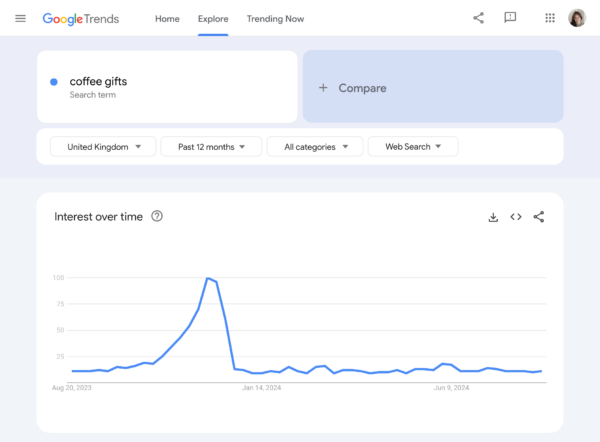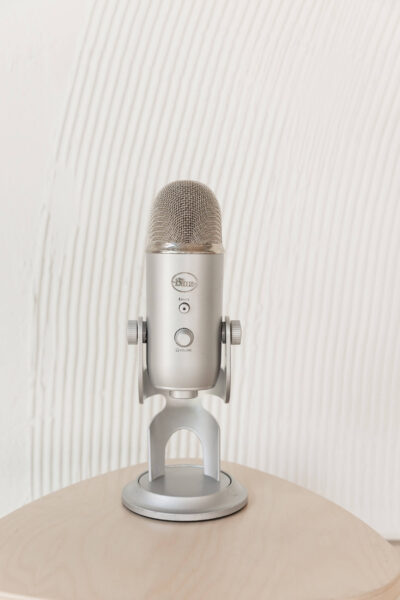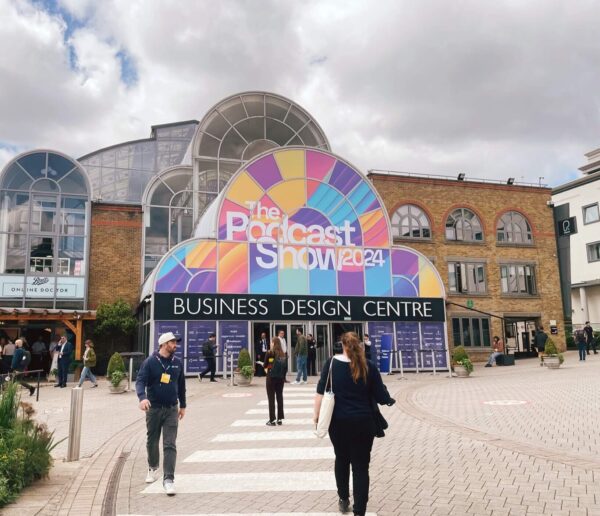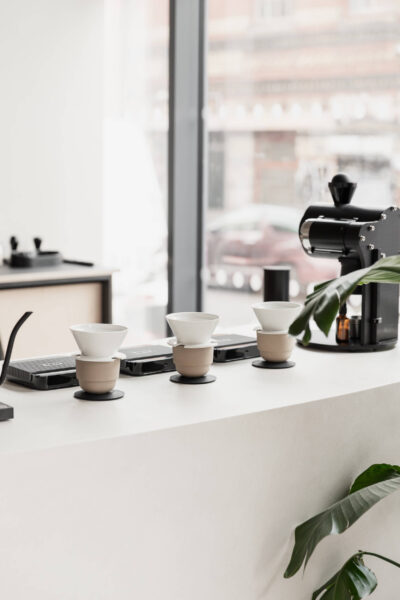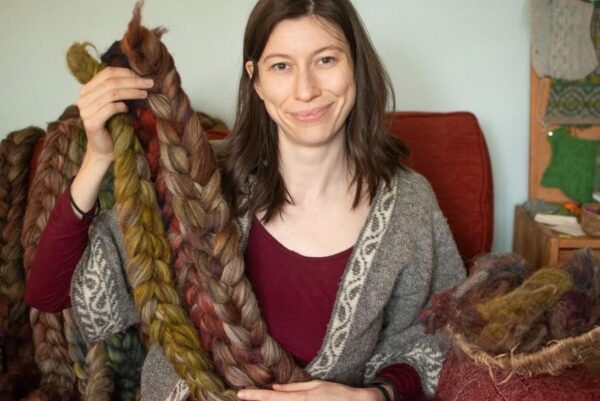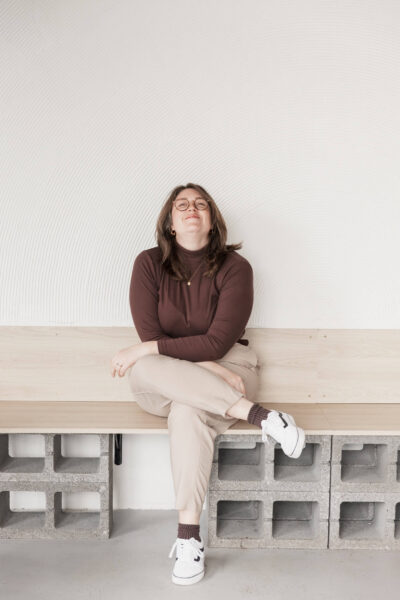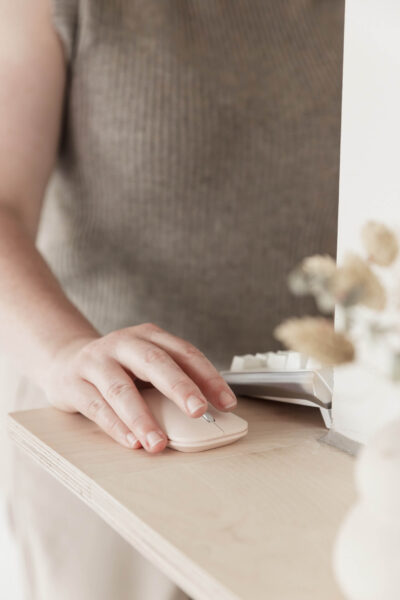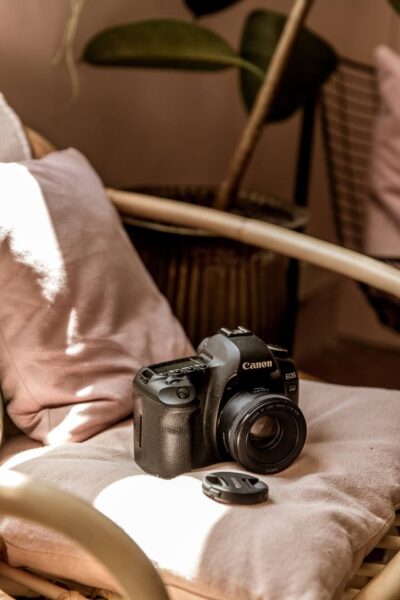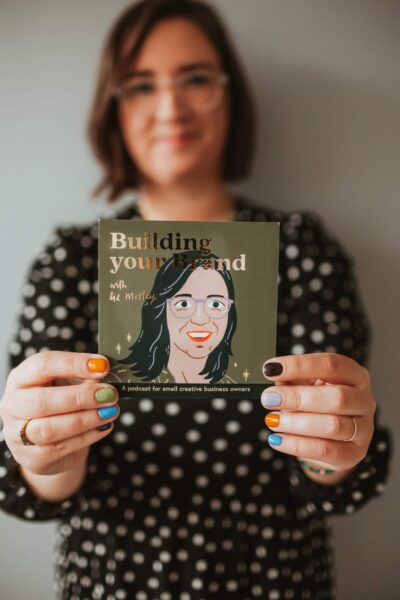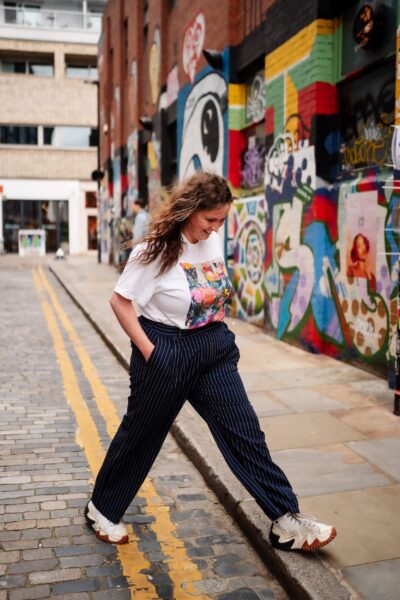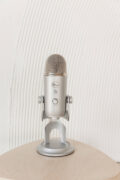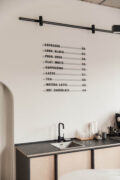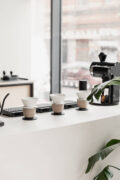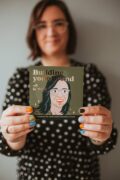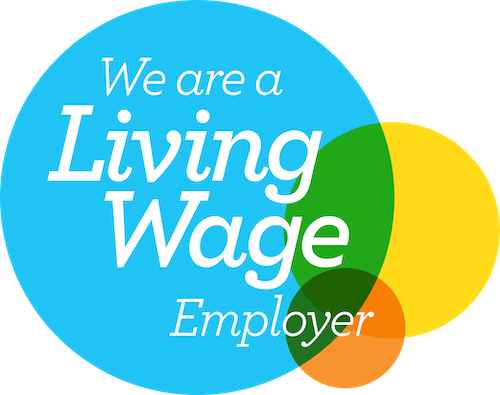If you run a café or coffee shop and want an utterly bangin’ website, you’re in so much ruddy luck. We’re about to dive into part two of my expert rundown of website tips for cafés and coffee shops.
If you missed numbers 1-7 where I spent a whole heap of time diving into policies, opening hours accessibility and more, check out part one. They don’t need to be read in order though, so if you’re ready for some hardcore* website tips, keep reading.
*by ‘hardcore’ I mean easy to follow and actionable.
8. Add a floor plan, or at least clear info about your café seating
I’m opening this part two with a bit of a wildcard website tip.
I love floor plans, almost as much as I love lattes. I reckon you love floor plans too, and have totes eyed-up the fancied penthouse on Rightmove and thought about how you’d knock down that third box bedroom so you can build your library nook in the communal area.
As well as being a nosy-day-dreamers favourite, floor plans solve a practical purpose for coffee shop and café customers. Let’s say an out-of-towner is trying to find the perfect spot to meet their mate from uni and catch up for an hour or two.
For your café to be the winning venue, that out-of-towner needs to know that you have seating – and ideally enough of it that there’s a solid chance they’ll find a table.
Including a simple floor plan amongst your coffee shop website imagery shares this info in a really quick and digestible format, allowing your new out-of-towner to lock-in your café as their number one spot.
In addition to (or instead of) the floor plan, try to share plenty of photos showing the interior and add a brief description, like “We have 6 tables that can seat up to 16 guests, 6 bar stools in the window, and our cosy corner for two with plush lounge chairs.”
9. Sell your coffee shop’s venue hire service
If I were to ask you “Would you hire out your cafe for a shoot/event?”, and your answer is either “Yeah of course, we do that all the time!” or “Ya know what, that sounds really interesting – let’s talk”, I wanna add a friendly sales page to your website about it.
Cafés ands coffee shops make for really convenient and swoonworthy event venues, from hosting personal celebrations like birthday and engagement parties to business events like industry meet-ups and book launches.
They’re also great for filming and photography, which is why this lady right here hired the incredible Greytone Coffee here in Bristol for our last brand shoot.
And they can also be great for making money, especially as you can set your own rates and payment terms, making sure you’re only taking on private hire events that’ll boost your bottom line.
Here’s exactly what I’d like for you to include on your coffee shop venue hire sales page:
- A short introduction pitch that includes your location
- Why hire a coffee shop for your event
- A list of the types of events you’d welcome
- Any restrictions, like specific days of the week or times
- A list of your amenities and services, e.g. catered vs non-catered events
- A little bit about the business (so your reader doesn’t need to leave and go to your about page)
- Your location, including nearby parking & public transport
- A floor plan and details about seating
- How to book & venue hire rates
- Venue hire FAQs, e.g. allergies, payment terms
And if you’re feeling fancy, you can also add:
- Images from previous events
- Testimonials from previous bookers
- Special offers, e.g. book your Christmas event in September to save X%
10. Cupping, but call it coffee tasting
I love a good cupping session. What I love even more is telling people I love cupping, and seeing the weird look on their faces when they think I’m being rather crude.
For those as yet unfamiliar, cupping coffee is the industry term for evaluating the qualities of coffee. If you’re a lay-person like me, it’s basically wine tasting, but for coffee.
Running cupping events can engage your local coffee-loving community, boost your links with your favourite coffee roasters, and add another revenue stream to your business.
And just like venue hire – if cupping sessions are something you’d love to do more of, or maybe just wanna give a punt to – I’d love to add it to your website, if just to target one specific customer: the corporate team-building social event.
Most UK businesses have a budget for their team socials, development, and wellness – and based on my (albeit dated) corporate experience – they’re also gagging for creative activities to do. After all, there’s only so many times you can boat down the Avon, paint a mug, or tackle a giant Tower of Hanoi.
Cupping is a ruddy perfect team building event. It’s more inclusive than a physical or booze-laden foray, and SEO-wise, I bet my bottom dollar that you’ll have fluff-all competitors for loads of relevant search terms, meaning you could rank really highly with minimal effort.
In Bristol, we have well over 100 coffee shops, cafes and roasteries – and precisely two of them are currently appearing in the top 10 results for “Coffee tasting Bristol”.
If any of the other 98+ spent like 45 minutes adding a ‘Coffee tasting in Bristol’ page to their websites, they’d rocket up to the top.
Here’s what I’d include on that page:
- A short introduction pitch that includes your location
- Why book a coffee tasting event
- A list of the types of events you’d welcome, e.g. team building, summer parties, business brunches
- What to expect, and what brands
- Any restrictions, like specific days of the week or times
- A little bit about your business (so your reader doesn’t need to leave and go to your about page)
- Your location, including nearby parking & public transport
- Capacity info, like a floor plan and details about seating
- How to book & cupping hire rates
- Cupping hire FAQs, e.g. allergies, payment terms
And if you’re feeling fancy, you can also add:
- Images from previous events
- Testimonials from previous bookers
- Special offers, e.g. book your Christmas coffee tasting in September to save X%
“Woah wait a minute Aime, did you just suggest basically the exact same web page as you did for venue hire?!” Muthafluffin’ hells yeah I did.
I wanna make your job as easy and as effective as possible, so let’s save some time by cloning that page. Worst case scenario, you’ve lost the time it took you to create new website pages.
Best case, you just booked out your coffee shop for 10 cupping sessions when you were gonna be closed anyway, making a tidy profit, and upselling beans to that corporate office and 15 workers that are now obsessed with your brand.
PS. The reason why I want you to use ‘coffee tasting’ rather than ‘cupping’ as the main descriptor of your service is just to match what people are Googling. I defo still want you to say cupping during your sessions, so you get to enjoy that awkward giggle.
11. Guidance for filming and content creation in your coffee shop
If I were smart, I would have included this tip just underneath the one about how great coffee shops are for photoshoots.
Ah well.
Social media content about your coffee shop can be incredibly beneficial and help your business to reach a greater audience.
Your website is also a great tool for speaking directly to these content creators, as well as setting expectations for what behaviour is appropriate in your premises.
If you’d like to encourage content creators to chat about your coffee shop, I’d add a section or page to your website that just mentions how you welcome respectful filming & photography in your café, and maybe even give some tips for the best/quietest times, and an email address they can contact to arrange behind-the-scenes/counter access.
I would also 100% add something like “We kindly request that you are conscientious and respectful, and make sure not to disturb our other patrons.”
12. Consider creating and maintaining a blog
I’ve dabbled in and out of SEO-talk in this article, but this is a heavy one so I’m gonna backtrack quickly with an explanation.
Search engine optimisation (SEO) is the process of optimising your website with the goals of ranking for as many relevant Google searches as possible, and being as close to the top as possible for those searches too.
Generally, the more competitors you have, the tougher SEO is. For example, we work with a few jewellery brands on their websites and SEO, and they have it tough with tens of thousands of competitors who also sell earrings and necklaces.
The very good SEO news is that as soon as you add a local focus, your competition gets massively slashed, and your job gets a lot easier.
Those 100+ coffee shops, cafés and roasteries in Bristol have a tiny competitor pool compared to those jewellery brands, so in theory, they really don’t have to work as hard.
But.
Coffee shop websites have one big weakness compared to other businesses – they’re generally really small, needing very few pages to address most visitors’ needs.
In order to rank for more search terms and to build up a bit of SEO ‘power’, we generally need more pages. One way to add more pages, is to blog.
I won’t go into a massive amount of depth here, so if you do wanna know more, we’ve got a whole heap of blogs about blogging. If you are willing to dip your toes into the blogging waters, I’d start by writing about topics such as your local business neighbours, your favourite coffee roasters, and maybe your controversial takes on home-brewing.
Another way to add more pages btw, is to add those two pages I mentioned up there too ↑
13. Romanticise your coffee shop with an illustration
Your customers will have a much easier job of finding your coffee shop if they know what it looks like. I love to include a prominent image of a café’s exterior on a website’s home page, but sometimes I love it even more when our clients can provide an illustration of their exterior.
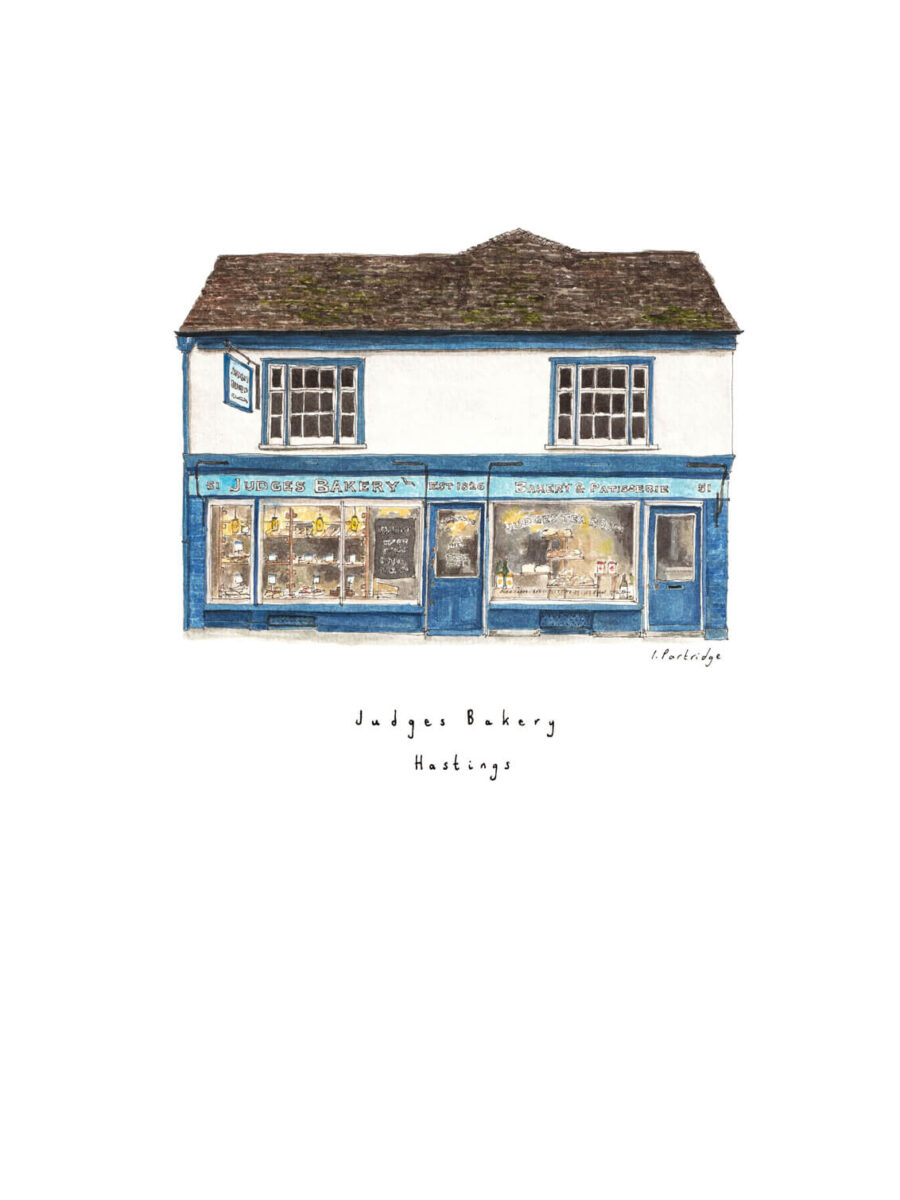
An illustration of your coffee shop means that you don’t need to worry about the weather, or passing pedestrians, or a massive white van that’s parked outside on your shoot day.
It also adds romance. Pairing with an artist you love to capture your premises can help flesh out your brand identity and increase brand affinity, helping your customers to fall in love with your coffee shop.
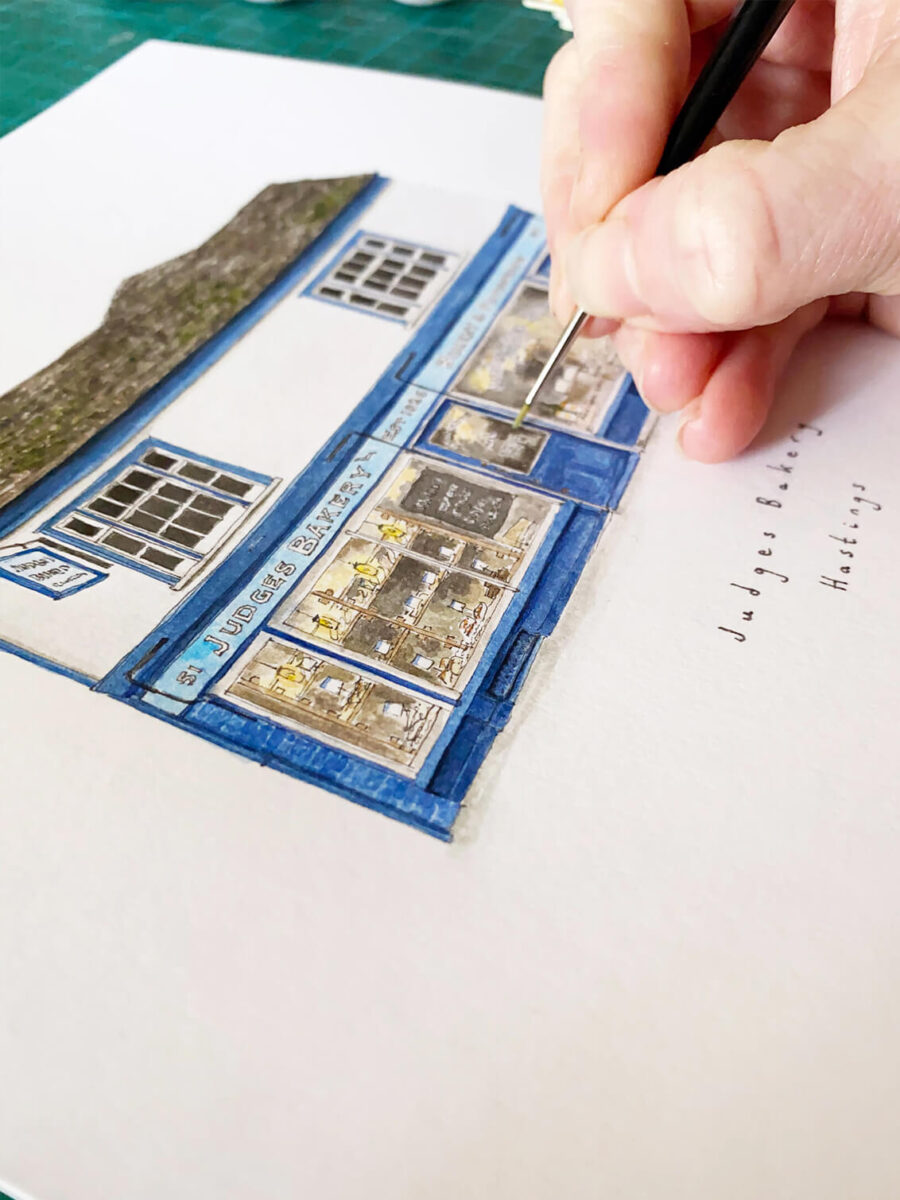
14. Sell quality merch to coffee lovers, especially at Christmas
“Coffee gifts” gets 1,000-10,000 monthly searches on average according to Google’s own Keyword Planner, and using Google Trends, we can see a massive peak for searches during the first two weeks of December.
Café branded merch can be a great addition to speciality coffee shops, especially those with a cult following and great brand visuals. It’s also a relatively safe bet and easy-buy for gift givers.
We’ve all been there – we’re tasked with grabbing a birthday gift or a secret Santa for someone we think we know really well, and then our minds go blank apart from “she likes coffee”.
Having a curated range of aesthetic branded merch at gifting price points means that your regulars’ loved ones can be treated to the most premium of t-shirts. I’m sure it’ll also be a relief to them as well, especially when they say, “hey, instead of buying me another bag of beans that aren’t the ones I’d choose myself, here’s a tasteful tote from my favourite coffee shop that I’d use every day”.
Hopefully they phrase it better than I just did.
Adding branded merch to your website can be a relatively easy addition on most website platforms – just make sure to use my bonus tips of ladling in phrases like “coffee gifts” and “great Christmas gift for coffee lovers”.
PS. Ya know what would make for great merch? That very nice illustration of your shop front.
15. Get backlinks from your coffee roasteries & suppliers
A backlink is a link from any other website to your website, and they’re a massive SEO-booster. You can test yours right now with a free checker like this one from ahrefs – and if you scored under 10, I’d like you to drop EVERYTHING and build some backlinks, like right now.
Ok, that was very dramatic, but in my experience, businesses with a low backlink score can really struggle to make serious headway with their SEO efforts, no matter how many other checkboxes they tick.
Y’all do have a ruddy great source of backlinks though – the websites of your coffee roasters and suppliers. Take some time to check through your favourite brands, and make sure you’re listed on their stockists pages, leave them a testimonial, and/or speak to them about being featured on their blog.
Backlinks from websites that have more in common with your own brand tend to be more useful, so it makes sense to start with your own connections.
If you’d like more SEO backlink building tips, check out my guest post for Bristol Market on The first 6 things to do with backlinks (for an absolute SEO beginner).
16. Update your café website content based on IRL customer questions
I wanna end this epically long two-parter blog post with a nice easy final tip, which might sound a lil cliché: if one customer is asking the question, there are likely more wondering the same thing.
Having the ability to interact with your audience in-real-life is such a massive asset. For any type of business, I really recommend letting those shop-floor conversations impact your website content.
Like, if you’re regularly asked what milks you have – it’s a good indicator that your website should say what milks you have.
If someone asked you to recommend which local beans make for a great home brew – that sounds like a delectable blog post.
Every website should be treated as something that grows and evolves, so let your customers help you create a better, bigger, and more useful website.
Woooof. That’s all I have for you, for now. I hope you’ve enjoyed these 16ish expert tips for designing a café or coffee shop website – and here’s the link to part one if you’re a rascal who’s enjoyed them backwardsly.
If you’d like more help with your small business website, SEO or blogging, you’ll love the Studio Cotton blog. If this long ol’ series has scrambled your brain a little, I recommend following me via @studio.cotton on Instagram – the tips I share there are waaaaayyyyy shorter. See ya there.

